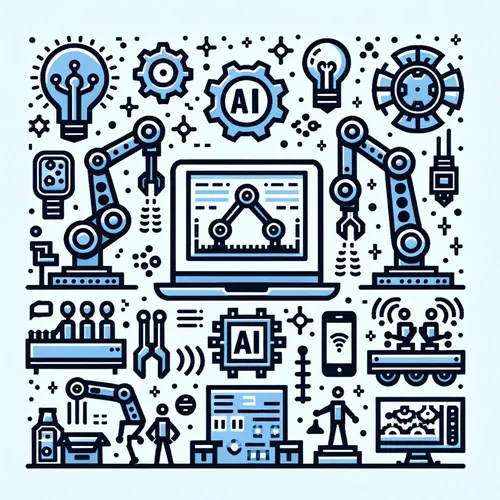Scandalous Secrets: AI & Robots Caught Canoodling on the Factory Floor!
- Author
- Quiet. Please
- Published
- Wed 06 Aug 2025
- Episode Link
- https://www.spreaker.com/episode/scandalous-secrets-ai-robots-caught-canoodling-on-the-factory-floor--67267666
This is you Industrial Robotics Weekly: Manufacturing & AI Updates podcast.
Industrial automation is accelerating at an unprecedented pace, transforming manufacturing and warehouse operations as we move through 2025. Smart factories are now business imperatives, seamlessly integrating robotics, artificial intelligence, and the industrial internet of things to deliver measurable gains in efficiency, quality, and responsiveness. According to the National Association of Manufacturers’ 2025 trends report, digital technologies and connected systems are not only improving profitability but also driving ambitious sustainability goals, putting data at the center of every process.
Artificial intelligence has firmly moved from promise to practice. Computer vision systems powered by artificial intelligence now scan products for defects in real time, far outpacing traditional manual inspections. Predictive analytics are being deployed to anticipate equipment failures before they stop the line, reducing downtime and unnecessary maintenance expenses. Hanwha Group reports that an overwhelming eighty-nine percent of manufacturers are actively integrating artificial intelligence into their networks, making it the backbone of modern production environments.
Industrial robotics continue their advance, fueled not just by innovation, but by a dramatic reduction in deployment costs. The industrial robotics sector has grown from a market value of seventeen point six billion US dollars in 2024 to a projected thirty-nine billion by 2035, notes IIoT World, reflecting an annual growth rate of more than seven percent. Plug-and-produce solutions and new robot-as-a-service models mean even smaller manufacturers can implement automation with little delay or need for deep programming expertise. Case in point: Standard Bots’ RO1 platform, which offers flexible, no-code integration for jobs ranging from CNC tending to pick-and-place, demonstrating how accessible advanced robotics has become.
On real factory floors, collaborative robots—known as cobots—are revolutionizing worker safety and productivity. WiredWorkers highlights how improved sensors and smarter software are enabling cobots to handle hazardous or repetitive tasks while working safely alongside humans. This not only reduces workplace injuries but also allows staff to focus on higher-value, creative activities, increasing job satisfaction and operational agility.
For anyone in the industry, practical action should center on evaluating where artificial intelligence-driven automation can address specific pain points, exploring scalable robotics deployments, and harnessing IIoT for deeper transparency. Regular review of productivity metrics and early involvement of shop-floor teams in technology adoption are key to smooth, high-ROI rollouts.
Looking ahead, industrial robotics and artificial intelligence will enable even greater process adaptability, customization, and resilience. The future promises more agile production lines, greener factories, and unprecedented collaboration between people and machines. Thank you for tuning in to Industrial Robotics Weekly. Join us next week for the latest in manufacturing innovation. This has been a Quiet Please production, and for more, check out Quiet Please Dot A I.
For more http://www.quietplease.ai
Get the best deals https://amzn.to/3ODvOta
